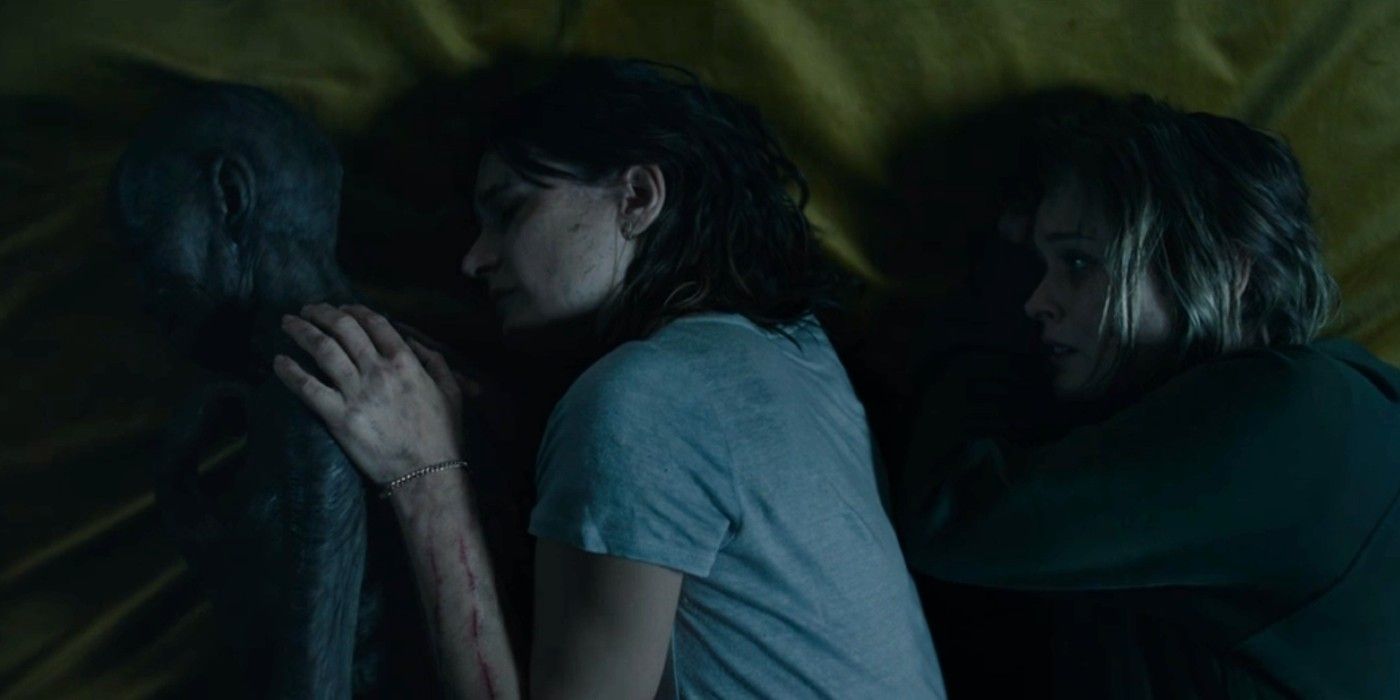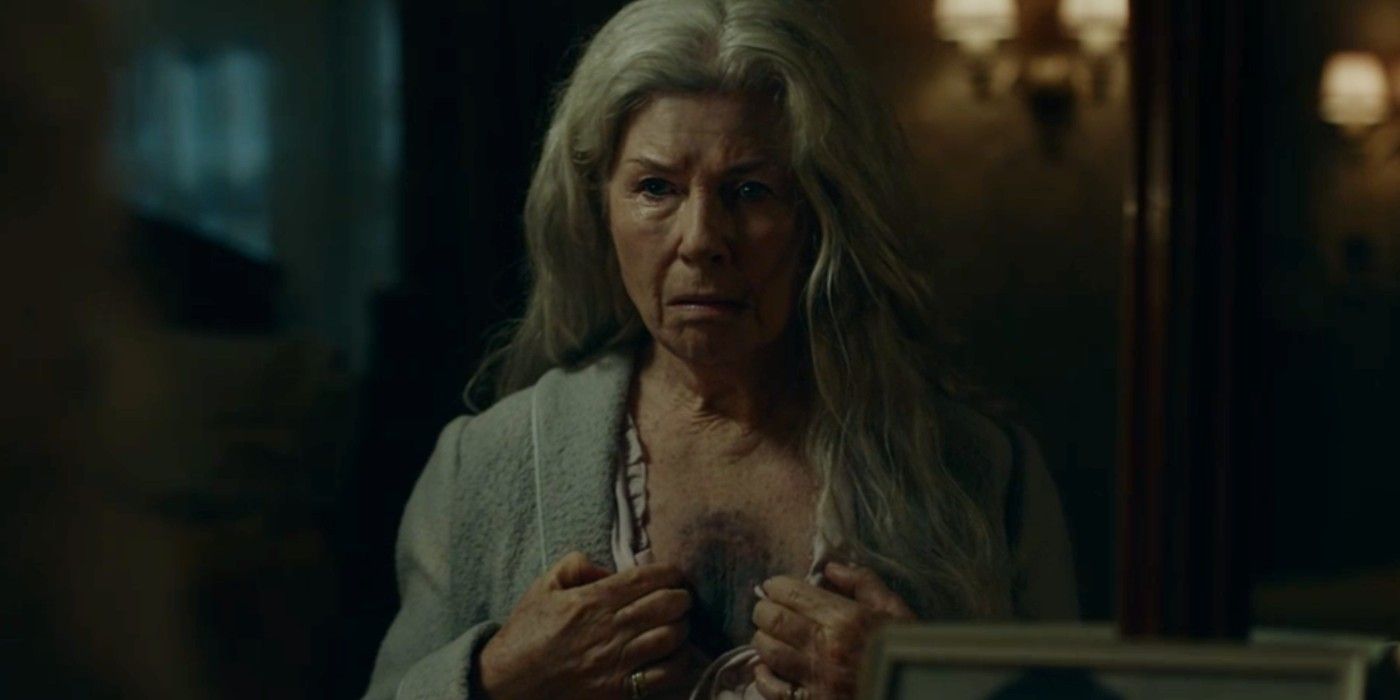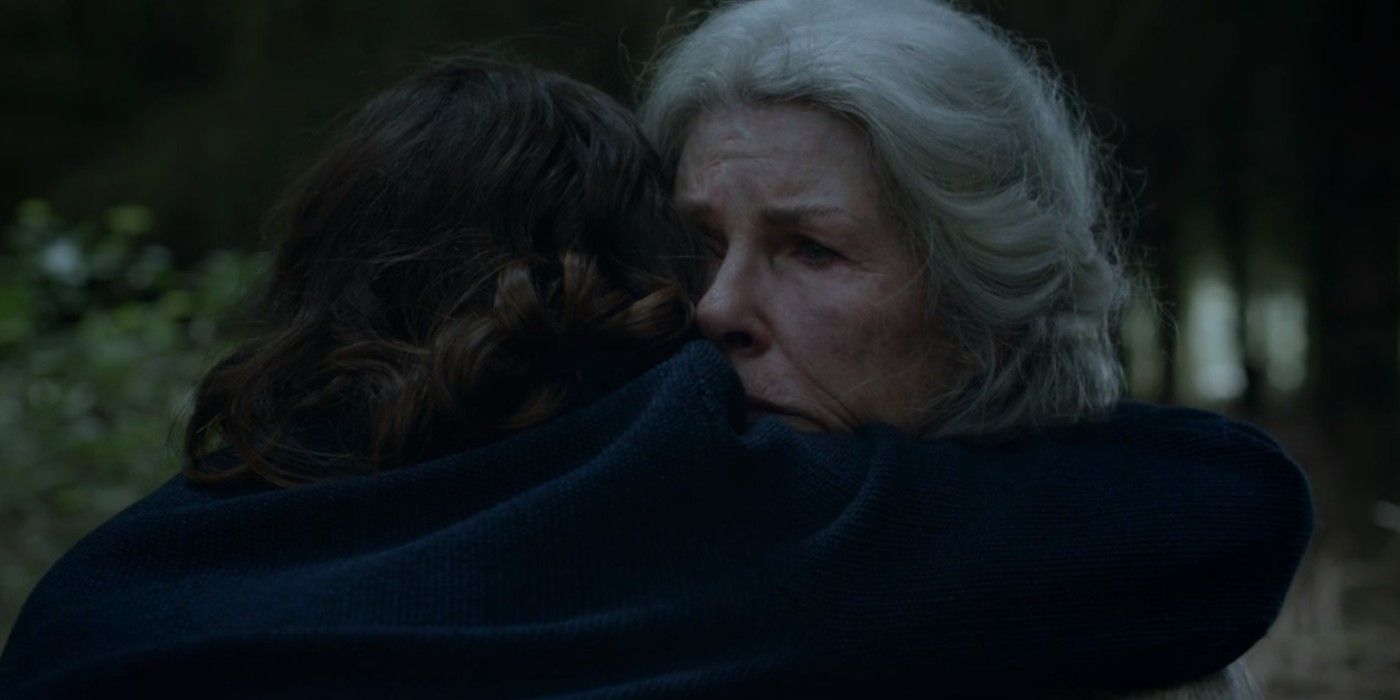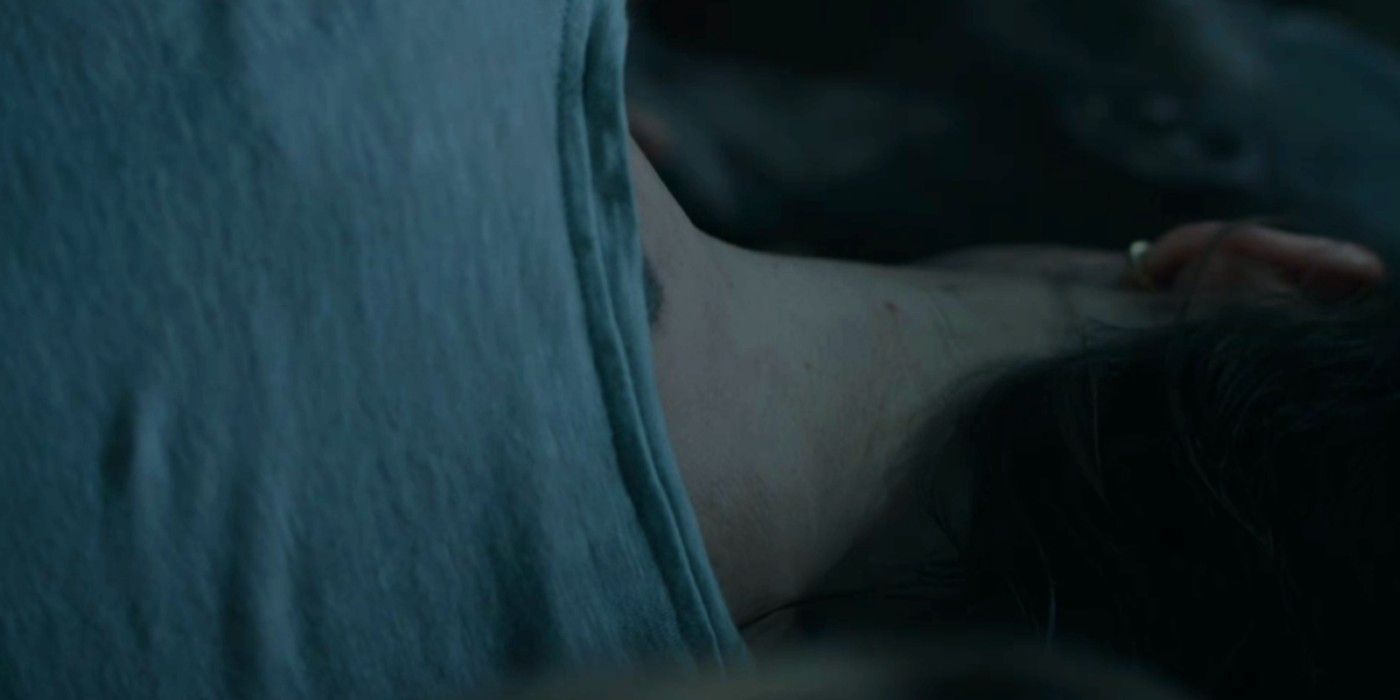WARNING! Spoilers for Relic ahead
Natalie Erika James’s 2020 supernatural horror film, Relic, uncovers a dark family history of demonic possession disguised as dementia. The IFC Midnight movie follows a family’s matriarch as she struggles with her worsening mental state. In her feature film debut, James proves that she is capable of creating an incredibly detailed and symbolic horror film that captures the attention of fans of the supernatural and film critics alike. As the film progresses, the dark and unsettling details reveal the truth behind the hereditary affliction manifests in inexplicably supernatural ways.
The film opens on Kay (Emily Mortimer) traveling to her mother’s home in the woods with her daughter Sam (Bella Heathcote). Upon their arrival, they discover that Edna’s (Robyn Nevin) dementia has completely taken over her, leading her to get lost in the woods and regularly forget to take her medication. Once the film reaches a climactic end, it is revealed that she has succumb to demonic possession that comes in the form of a hereditary black spot that appears on members of the family and expands with age. Edna’s transformation shares a striking resemblance with Jill Larson’s titular character in The Taking Of Deborah Logan (2014). As Deborah becomes detached from reality, her possession overcomes her.
James's film resembles the familiar elements of Ari Aster's Hereditary (2018), in which a family is torn apart by death. Except in Relic, the family comes together to stand with one another. The two share a common thread of demons and the way they manifest within a family as well as the possession of a beloved family member. Edna ultimately succumbs to the demonic possession lying dormant inside of her. Once the black spot that covers her chest expands, she sheds her skin to reveal a blackened demon hidden behind her human form. Relic contains an abundance of symbolism that refers to an array of topics including the trauma of watching loved ones wither away, the fear of an inescapable hereditary fate, and supernatural possession.
What Edna’s Dementia Actually Means
Relic's primary emphasis is the deterioration of Edna’s mental state due to her worsening dementia. While it is common to fear this in general, her dementia represents a multitude of factors within the film’s plot. For instance, it could quite literally represent the fear of the hereditary nature of dementia, especially for Kay and Sam as they are forced to witness Edna at her worst. In the context of a supernatural film (as it is), her dementia is actually an overt way of manifesting demonic possession through an unexpected and unique lens that differs from tradition.
Her demonic possession predicates what will transpire for the rest of her family. As Sam looks at her mother’s back, she discovers that Kay also has a black spot, which means she will be next in line to succumb to the same fate. Ultimately, dementia stands as a method to creatively manifest demonic possession while complicating the relationships between Edna, Sam, and Kay with their growing fear of the hereditary affliction. At some point in their lives, these two women have the high probability of enduring the same cognitive decline turned possession as their family matriarch, Edna.
Their Great Grandfather’s Fate Explained
The biggest question that remains once the film comes to a close pertains to the great grandfather. Supposedly, he shared the same fate as Edna does in Relic, but many years prior. Even though this point exists from early on in the film, James frames the dementia as primarily afflicting the women in the family. It is no coincidence that three generations of women are present as well as an ending that sets up the future for the next in line. Therefore, it is presumed that the demonic possession is a curse on women in the family, but their great grandfather’s end complicates this aspect of the film.
When their great grandfather was abandoned by the entirety of the family, he died of dementia while secluded from the outside world. He was surrounded by the same black mold that may have impacted Edna’s dementia and demonic possession. Regardless of this fact, his story’s presence in the film is utilized to establish the importance of the family staying together through good times and bad. Once the film comes to an end, Sam questions why Kay refuses to leave the decaying demonically possessed corpse of Edna. To which, she responds that she cannot leave her mother because she needs to be there for her. Therefore, his story speaks to the loneliness that comes with death and the internalized fears of dying alone.
Relic’s Symbolic Ending
When Kay lays next to her newly transformed mother, Sam hesitates to lay with them at first. Once she joins them, her facial expression is deeply distraught and concerned for her mother’s mental stability considering the fact that they are spooning a demon that was once Edna. It is at the moment she looks at her mother’s back that Sam notices the black spot that indicates that her mother is next in line to become possessed. Even deeper than the black spot, this scene in particular further solidifies the deeply emotional meaning behind the elements James utilizes throughout the film.
With the story of their great grandfather in mind alongside the film’s emphasis on staying with Edna through everything she is experiencing, this film becomes much larger than a horror movie about possession. It represents a deeper sense of belonging, the importance of family, and the complications that come with caring for people who are growing further from reality day by day. James successfully chose to use dementia as her method to showcase this withdrawal and deterioration. The very idea of cognitive decline is enough to follow audience members well after the film comes to a close. By making it a never-ending cycle in the family’s lineage, James creates an even darker energy to Relic that is thought-provoking and gut-wrenching.
Relic is not an overly complicated film and appears fairly straightforward in its storytelling. It is James’s use of symbolism that creates a multitude of layers for viewers to peel back in order to understand the entire story. Her use of dementia, demonic possession, loneliness, and seclusion artfully crafts atmospheric pressure that the characters are forced to navigate and viewers are made to face head on. Just as Hereditary's true villain was the grief the family faced, James's film has a villain of loneliness and fear. Relic is an extraordinary film that tells the importance of family and the isolation that accompanies life and death.




